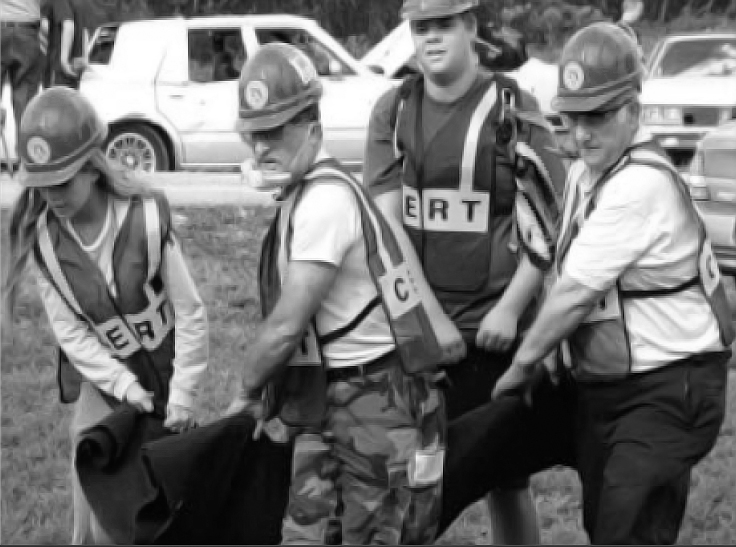
On Monday, Oct. 20, an informational meeting was held to discuss the creation of a SUNY New Paltz based Community Emergency Response Team (CERT).
A division of former President George W. Bush’s Citizen Corps program, CERT provides free training and education to volunteer citizens about disaster response and preparedness for hazards that may impact their area. Volunteers are trained in basic firefighting, search and rescue, traffic control, emergency medical aid and other life saving techniques such as CPR to assist others in their neighborhood or workplace following a disaster situation when first-responder professionals are not immediately available to help.
According to SUNY New Paltz Chief of University Police David Dugatkin — co-organizer of the SUNY New Paltz CERT along with campus Fire Safety Officer Scott Schulte — in 95 percent of all emergency situations, bystanders or victims themselves are the first to provide emergency services, care and rescue.
“Sometimes it might just mean help [a victim] up from the street, sometimes in might be going into a burning building and rescuing somebody,” Dugatkin said. “We’re not going to ask you to do that as a CERT member; we’re going to show you what to do to keep yourself safe and give you the training, awareness and knowledge to know just what [emergency responders] want you to do, what level to take it to so that you can truly make a difference.”
CERT members are contacted and deployed by their sponsoring agency when a emergency event’s damage is too large for emergency professionals to respond to immediately given their personnel and resources. CERT members survey and assist within the community, prioritizing action that provides “the greatest good for the greatest number of people” until professional help arrives, Dugatkin said. CERT members can also be involved in non-emergency projects where safety can be improved by their presence. Dugatkin gave the example of pedestrian direction during large campus events.
CERT training consists of 20 hours of instruction, both in the classroom and in practice, over the course of several weeks, according to informational pamphlets handed out at the meeting. The classes are taught by first-responders in law enforcement, firefighters and emergency medical personnel from New Paltz. At the conclusion of the nine sessions listed, CERT trainees will take a final exam and participate in a disaster simulation test. Upon completion of the training, members are certified and given a backpack with equipment and tools for potential emergency response such as a pry-bar and rope.
Dugatkin said with the training CERT gives, students, faculty and staff will gain a better understanding of their responsibility in disaster preparedness and allow them to safely help themselves while helping others in the event of an emergency.
“The point of this is for preparation,” Dugatkin said. “It’s been the buzzword for the last 20 years and it isn’t going to go away. It wasn’t really until 9/11 that [the United States] woke up to it and it really shook all of us. That’s why we’re doing this.”
Dugatkin and Schulte said they hope the first class can begin come early spring of 2015. Dugatkin said while the SUNY New Paltz CERT is still early in development, in the future the college could provide credits to students who take the class. Currently, non-campus personnel are ineligible for the training, but that too may change once the program is further developed, Dugatkin said.
